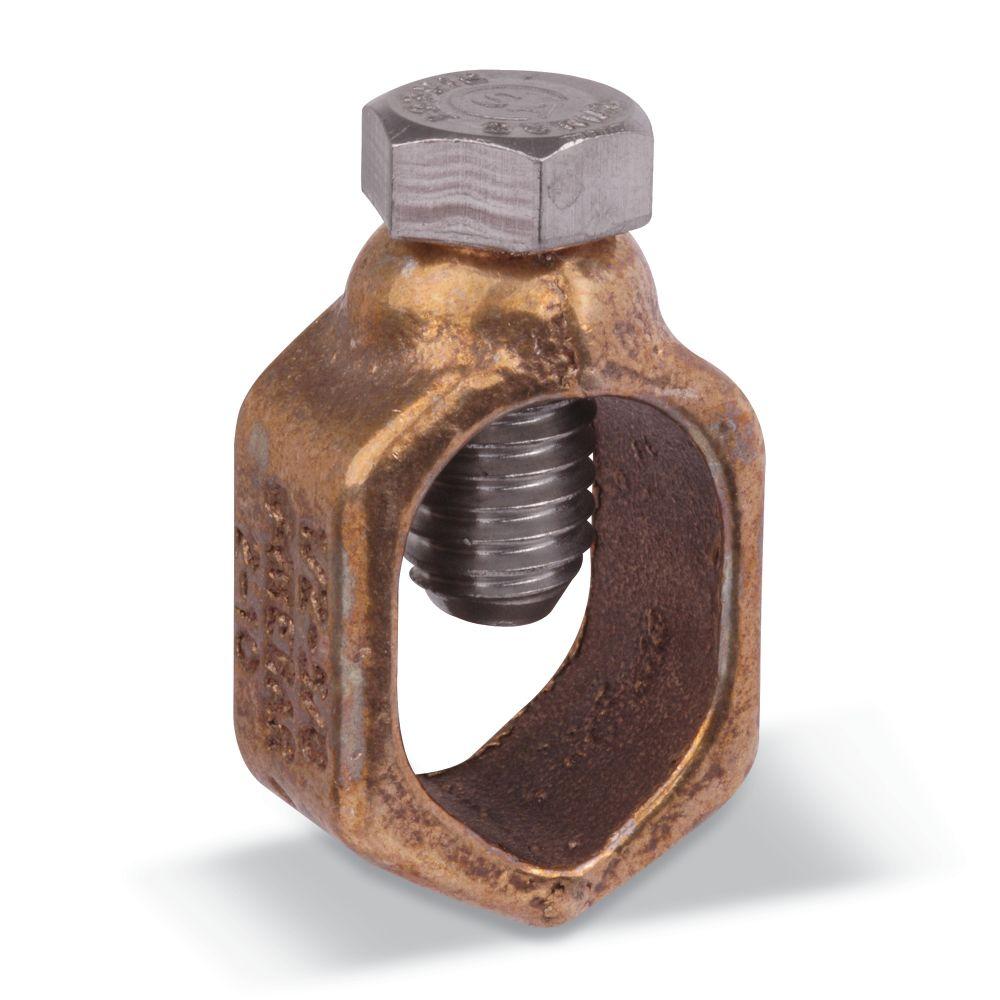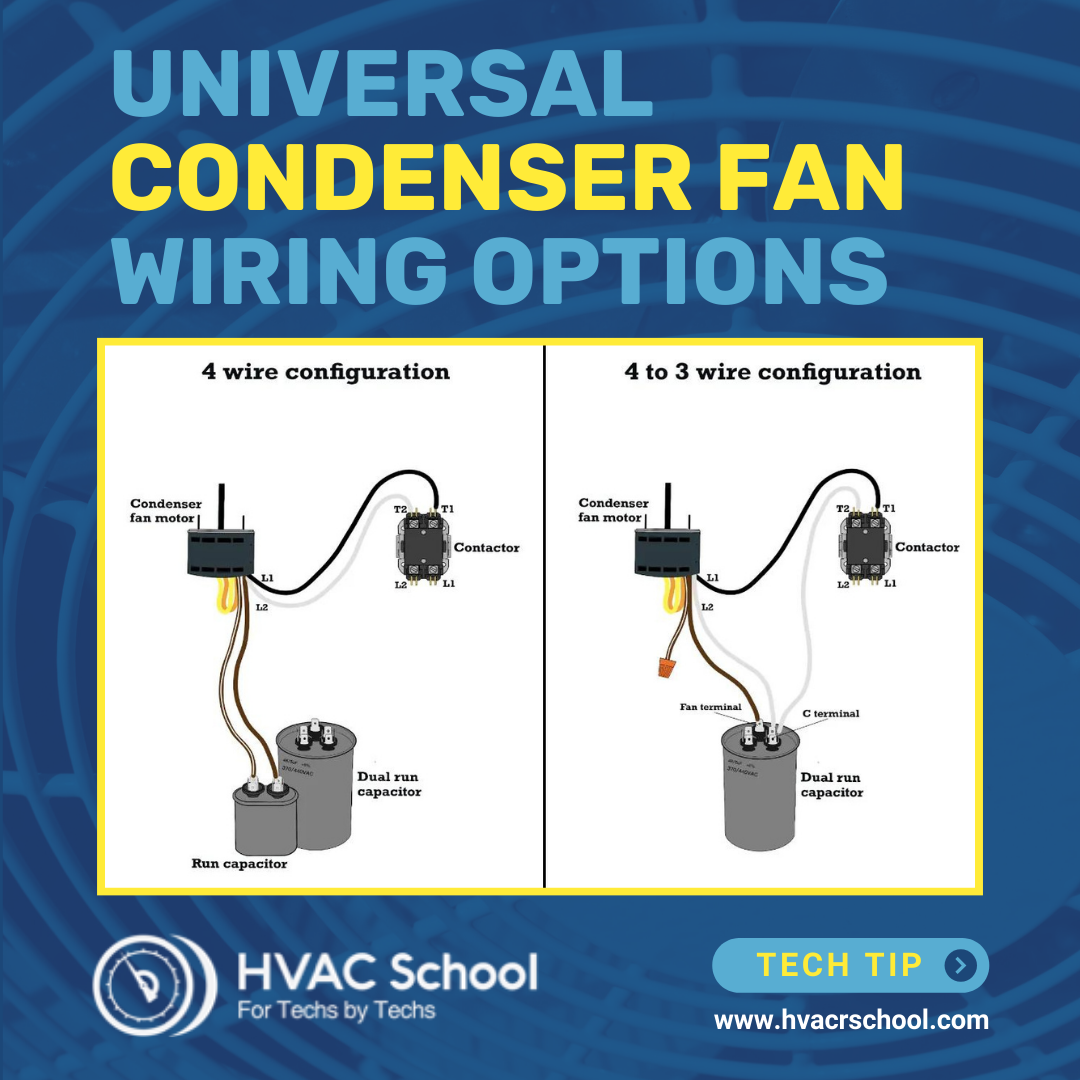Get Tech Tips
Subscribe to free tech tips.
An even EASIER way to check capacitors

In a previous article, we covered the standard way to check capacitors under load.
I am now going to give you an even easier test.
A properly functioning PSC (permanent split capacitor) or CSCR (capacitor start capacitor run) motor should have a power factor of very close to 1 if they have a properly sized and functional capacitor.
If you have a multimeter that can read power factor directly (like the Testo 770-3), you can measure the power factor by reading the voltage at the contactor and the amperage at the motor common (like usual). If you are at or close to 1 power factor, then your capacitor is both functional and the right size.
In the image above, I have a compressor that calls for a 35 MFD capacitor, and the capacitor is running right at 35 in the under load test as well as the bench test. That's why the power factor is right at 1. I installed a run capacitor of 10 MFD larger and smaller, and sure enough, the power factor dropped in both cases.

So, not only do I see right away that either my capacitor is failing or improperly sized, but we can also see the wattage (power) in real time.
As a side note, I was only seeing about a .3 amp difference between start and run/common together when I oversized the capacitor, so I may have missed the issue if I had just used that test alone.
Now, in order to see exactly WHAT is wrong with the capacitor, whether it is failing or improperly sized, you would need to do the under load test (start winding amps x 2652/capacitor Volts) or bench test the cap and then check against motor data plates.
But as a regular service procedure, this power factor feature is a time-saver and gives you a unique insight into the operation of the motor.
—Bryan
P.S. – If you are interested in the 770-3, use the offer code “getschooled” at TruTechtools.com for an 8% discount










Comments
As I am not familiar with using a DMM to measure PF, would the fan motor being parallel off of the same terminals as your probes are measuring the compressor affect the reading?
As I am not familiar with using a DMM to measure PF, would the fan motor being parallel off of the same terminals as your probes are measuring the compressor affect the reading?
pharmacie en ligne fiable vente de mГ©dicament en ligne or pharmacie en ligne france fiable
http://www.jordin.parks.com/external.php?site=http://pharmafst.com п»їpharmacie en ligne france
[url=https://cse.google.com.au/url?sa=i&url=http://pharmafst.com]pharmacie en ligne pas cher[/url] acheter mГ©dicament en ligne sans ordonnance and [url=https://dongzong.my/forum/home.php?mod=space&uid=28860]pharmacie en ligne pas cher[/url] pharmacie en ligne avec ordonnance
pharmacie en ligne fiable vente de mГ©dicament en ligne or pharmacie en ligne france fiable
http://www.jordin.parks.com/external.php?site=http://pharmafst.com п»їpharmacie en ligne france
[url=https://cse.google.com.au/url?sa=i&url=http://pharmafst.com]pharmacie en ligne pas cher[/url] acheter mГ©dicament en ligne sans ordonnance and [url=https://dongzong.my/forum/home.php?mod=space&uid=28860]pharmacie en ligne pas cher[/url] pharmacie en ligne avec ordonnance
Cialis en ligne: Cialis generique prix – Acheter Cialis 20 mg pas cher tadalmed.shop
Cialis en ligne: Cialis generique prix – Acheter Cialis 20 mg pas cher tadalmed.shop
Acheter Viagra Cialis sans ordonnance [url=https://tadalmed.shop/#]cialis generique[/url] Tadalafil 20 mg prix en pharmacie tadalmed.com
Acheter Viagra Cialis sans ordonnance [url=https://tadalmed.shop/#]cialis generique[/url] Tadalafil 20 mg prix en pharmacie tadalmed.com
kamagra 100mg prix Kamagra pharmacie en ligne or achat kamagra
http://maps.google.ml/url?q=https://kamagraprix.shop kamagra pas cher
[url=https://maps.google.com.bd/url?sa=t&url=http://kamagraprix.shop]kamagra livraison 24h[/url] kamagra gel and [url=http://www.9kuan9.com/home.php?mod=space&uid=3105224]Kamagra Commander maintenant[/url] kamagra gel
kamagra 100mg prix Kamagra pharmacie en ligne or achat kamagra
http://maps.google.ml/url?q=https://kamagraprix.shop kamagra pas cher
[url=https://maps.google.com.bd/url?sa=t&url=http://kamagraprix.shop]kamagra livraison 24h[/url] kamagra gel and [url=http://www.9kuan9.com/home.php?mod=space&uid=3105224]Kamagra Commander maintenant[/url] kamagra gel
kamagra pas cher kamagra pas cher or Kamagra Commander maintenant
https://maps.google.gp/url?sa=t&url=https://kamagraprix.com kamagra en ligne
[url=https://maps.google.com.py/url?q=https://kamagraprix.com]acheter kamagra site fiable[/url] achat kamagra and [url=https://app.guiigo.com/home.php?mod=space&uid=28017]Achetez vos kamagra medicaments[/url] kamagra gel
kamagra pas cher kamagra pas cher or Kamagra Commander maintenant
https://maps.google.gp/url?sa=t&url=https://kamagraprix.com kamagra en ligne
[url=https://maps.google.com.py/url?q=https://kamagraprix.com]acheter kamagra site fiable[/url] achat kamagra and [url=https://app.guiigo.com/home.php?mod=space&uid=28017]Achetez vos kamagra medicaments[/url] kamagra gel
cialis prix: Cialis generique prix – Cialis en ligne tadalmed.shop
cialis prix: Cialis generique prix – Cialis en ligne tadalmed.shop
olympe casino en ligne: olympe casino cresus – olympe casino cresus
olympe casino en ligne: olympe casino cresus – olympe casino cresus
Ryan, the test lead probes are measuring the supply voltage part of the PF equation which is the same for the compressor and fan. The amp clamp is measuring the compressor only. You can also perform the PF test on the fan by itself by simply putting the amp clamp around the fan common instead of the compressor common as shown.
Ryan, the test lead probes are measuring the supply voltage part of the PF equation which is the same for the compressor and fan. The amp clamp is measuring the compressor only. You can also perform the PF test on the fan by itself by simply putting the amp clamp around the fan common instead of the compressor common as shown.
Nice information.
Nice information.
pharmacie en ligne livraison europe: Pharmacie en ligne France – pharmacie en ligne france fiable pharmafst.com
pharmacie en ligne livraison europe: Pharmacie en ligne France – pharmacie en ligne france fiable pharmafst.com
To leave a comment, you need to log in.
Log In